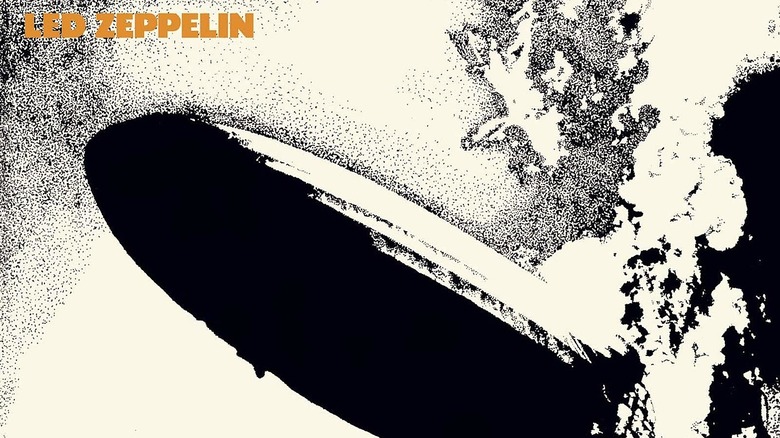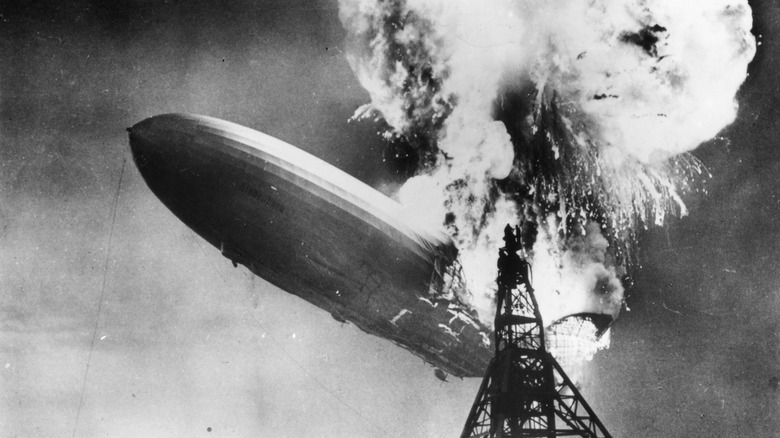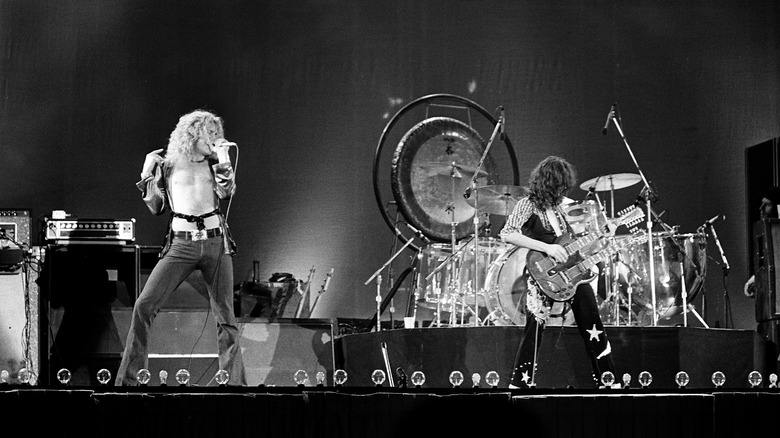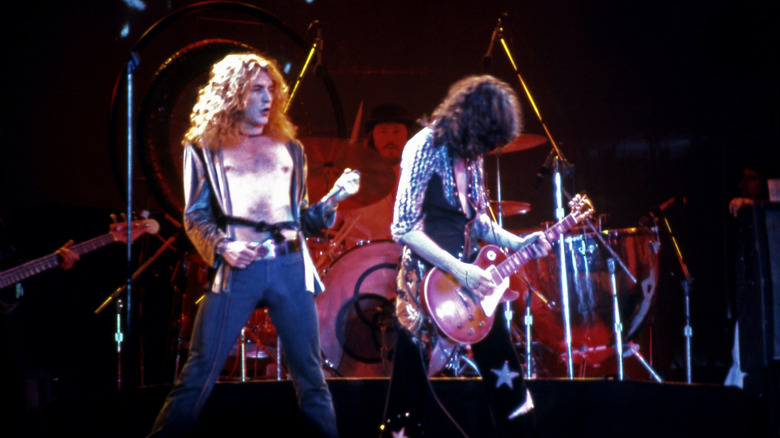What You Didn't Know About Led Zeppelin's Debut Album's Artwork
Classic rock has brought an untold amount of beloved rock bands and albums to the general populace. And, Led Zeppelin are no exception. The iconic British band got their start in 1968, and was formed with members Robert Plant, John Paul Jones, John Bonham, and Jimmy Page (via Britannica). They originally went under the name New Yardbirds in the same year, but soon changed to Led Zeppelin.
The group has produced some of the most well-known albums in rock music history, like their self-titled debut "Led Zeppelin," "Physical Graffiti," "Led Zeppelin I-IV," and many more. Their discography is frequently mentioned on Rolling Stone's 500 Greatest Albums of All Time list. Along with that, they were inducted into the Rock & Roll Hall of Fame in 1995, according to the official website.
But, along with the music comes the album artwork. And, although judging an artist by its' cover may not be right, Led Zeppelin's album artwork is some of the most legendary of all time, including that shocking image on their debut album.
Led Zeppelin's debut album's artwork tells a story about the Hindenburg disaster
Led Zeppelin's eponymous debut album was released to the public on January 12th, 1969. The blues-rock album became an instant commercial success laying the foundation for their explosive future albums which led them to become the rock 'n' roll juggernauts we all know (via Far Out and This Day in Music).
The album's artwork was created by artist George Hardie, who also did the artwork for the iconic Pink Floyd albums "The Dark Side of the Moon" and "Wish You Were Here," according to Far Out. The artwork is a monochrome version of the 1937 Hindenburg disaster, which happened in New Jersey, United States. As said by Britannica, the Hindenburg was a large Zeppelin, which is a dirigible aircraft that uses hydrogen and helium for lift. The Hindenburg went up in flames that day as it was landing at the Lakehurst Naval Air Station. The exact cause is unknown, but prevailing theories blame an atmospheric electrical discharge.
The band was threatened with legal action over the artwork
The designer for the album, George Hardie, went with both a Rapidograph pen – a sketching pen used for technical work such as architectural drawings — and a mezzotint to give the artwork its distinctive look. In "From A Whisper to A Scream: The Complete Guide to the Music of Led Zeppelin," Hardie recalls that he worked with a small stripped-down copy of the Hindenburg photograph and used some tracing paper to complete the job.
The artwork was striking, and caught the attention of Eva von Zeppelin, relative to Count Ferdinand von Zeppelin, the inventor of the flying ships. Originally, the band had invited Frau Zeppelin to their Copenhagen gig, so as to convince her that they meant no ill-will. Unfortunately for the band, she blew up in anger after seeing their Zeppelin album cover, according to "Led Zeppelin The Story of a Band and Their Music, 1968-80" by Keith Shadwick. Her anger stemmed from her need to "[guard] the honor of her family name." Eventually, the band decided to play under the band name The Nobs at their Copenhagen gig to pacify Von Zeppelin (via "Led Zeppelin and Philosophy All Will Be Revealed").
The album cover was originally Jimmy Page's idea
Led Zeppelin's discography is full of surprises. There are plenty of facts about their albums that fans may otherwise not be aware of. But, one fact that may take some people by surprise is that the idea for their most iconic album cover came from band member Jimmy Page himself.
While still at art school in London, England, George Hardie was referred by a friend to design a cover for Zeppelin's debut album. Hardie came up with a few initial cover designs, all of which were promptly rejected by Page. According to Rolling Stone, Page was drawn to Sam Shere's 1937 Hindenburg photo, which gave him the idea for what he wanted the artwork to be. Hardie set about recreating the photo in his own style until the legendary album cover was born.
Hardie was only paid a modest £60 for his work, which seems a fairly low fee for the prestige his artwork would ultimately claim, according to Christie's. Many years later, he found the original work lodged at the bottom of a chest, and stuck on it was a note reading, "G's pension fund." In June 2020 the piece sold for $325,000 at Christie's. G's pension fund, indeed.



